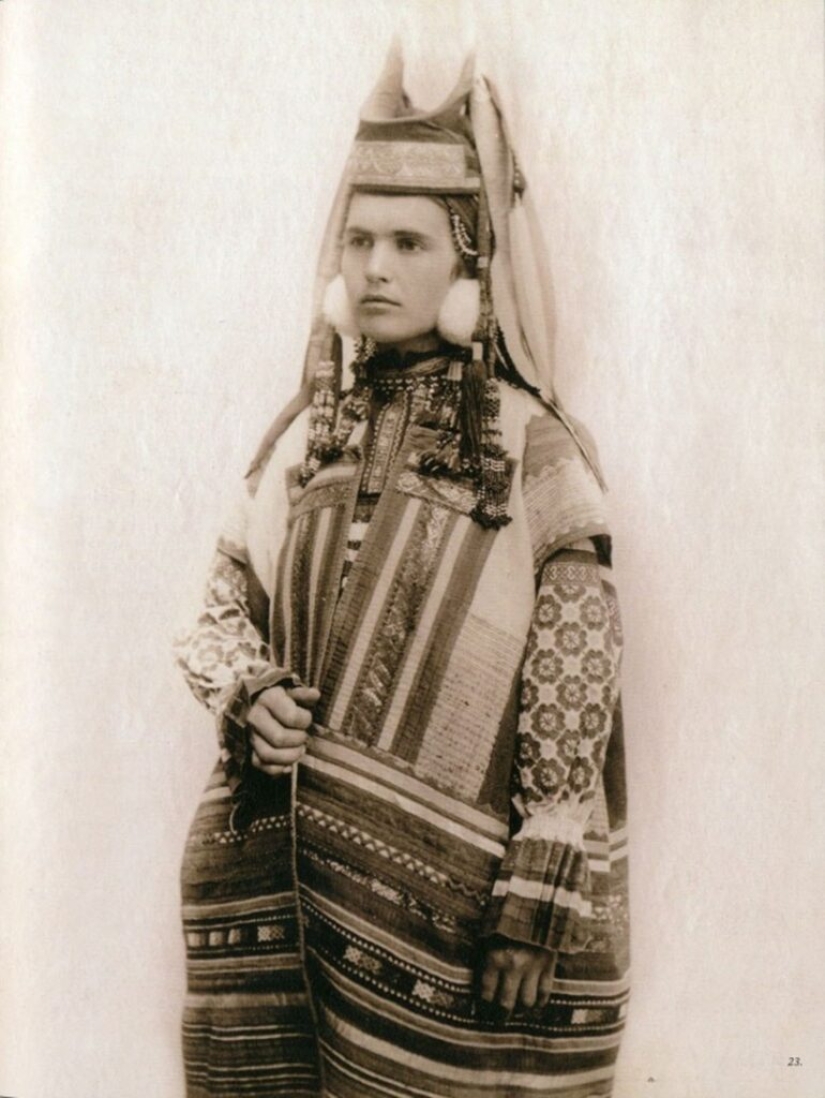"Horned kichka": why women in Russia wore hats with horns
Categories: Fashion | History | Nations
By Pictolic https://pictolic.com/article/horned-kichka-why-women-in-russia-wore-hats-with-horns.htmlThe national costume of a Russian woman is very diverse. According to the clothes, it was possible to find out not only the region, but also the marital status of the Russian woman. There were especially many variations of hats. Unfortunately, most of us only know kokoshnik. And only very few will remember what "kika" is.

These unusual hats with horns are mentioned in historical documents that are more than five centuries old. Scientists believe that the "horned kichka" or "kika" appeared in pre-Christian times. Most likely, this name came from the Slavic "kyka", that is, "hair". This word has been preserved in the Croatian and Bulgarian languages and means a woman's braid or a man's forelock.

Kiki could be of different shapes, but their front part was always solid. It was made of birch bark, cloth stuffed with straw and other materials that could be given a rigid shape. And she herself could be different — in the form of a scapula, plate or hoof. But most often the whales were given the shape of horns.

The most popular horned kiki were in the south of Russia. The horns could be of different shapes and sizes. Some specimens reached a height of 30 cm and looked very impressive. The rigid base was certainly covered with fabric decorated with embroidery, and sometimes with precious stones, pearls and gold plates.

There was one important requirement for Kika. This headdress was bound to completely cover the hair. In Russia, it was believed that a married woman should not show her hairstyle to outsiders. Therefore, after getting married, the girl immediately hid her braids under the kitsch. The accessory seemed to replace the beauty of the hair, so it often looked like a real work of art.

But why was the horned form chosen most often for kiki? There is no consensus among historians on this issue. The most common opinion is that a headdress is an imitation of the animal world. This motif is found in many peoples of the world and is usually associated with pagan beliefs.

Horns have been considered a powerful talisman since ancient times. They brought good luck, protected from the evil eye and helped in battle. That is why the warriors of some peoples wore horned helmets. One of them, made by the Celts in the 2nd century BC, can be seen in the British Museum.

Most likely, the horned kiki also performed protective functions, protecting the mother and her children from damage. Birth rites indirectly confirm this version. In some regions of Russia, two-horned hooks were used in them, with which pots were taken out of the oven. To protect the expectant mother and baby from the evil eye, the grab was leaned against the oven with its horns. In the Oryol province, the same grab was placed on the wedding night under the bed of the newlyweds to ward off evil spirits.

The cult of fertility is also associated with horns. Some pagan female deities were depicted with horns or a crescent moon on their heads. Therefore, a kika with horns could also help with the birth of children. There are other hypotheses about the origin of these unusual headdresses, but no one knows if we will ever know the exact meaning of the Russian kiki.
Recent articles

Sometimes you see a tattoo on a person and think: "Why did he do it at all?". A familiar feeling? If you have never experienced it, ...

Taxi ride like a lottery — you never know if you will pull the winning ticket. Even the official services like Uber does not ...

Finnish photographer Juha Tanhua has shot an unusual series of "space photos". Astrophotographic images of stars, galaxies and ...